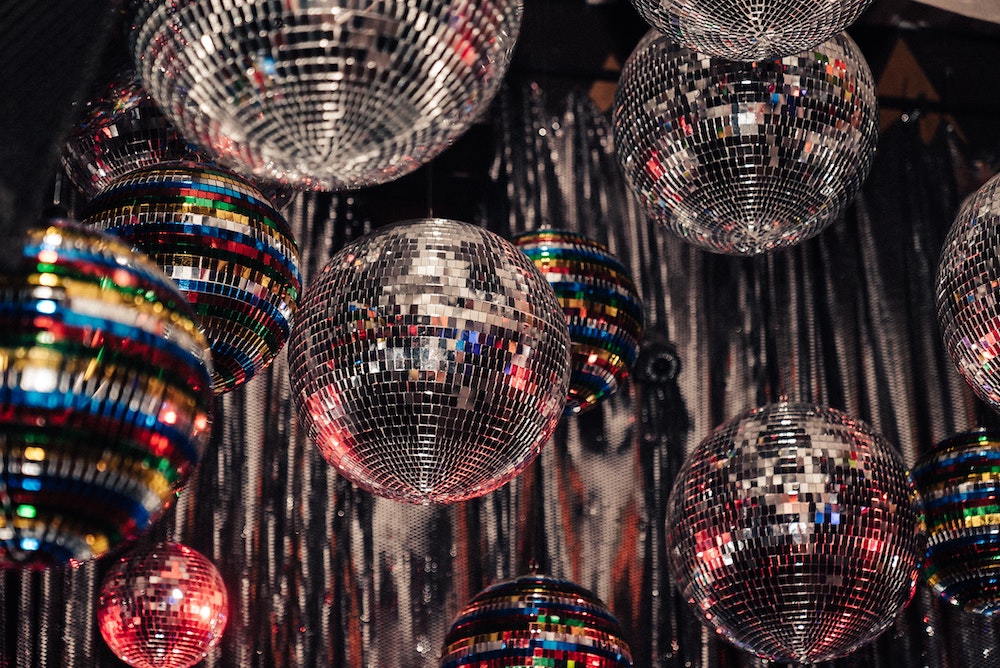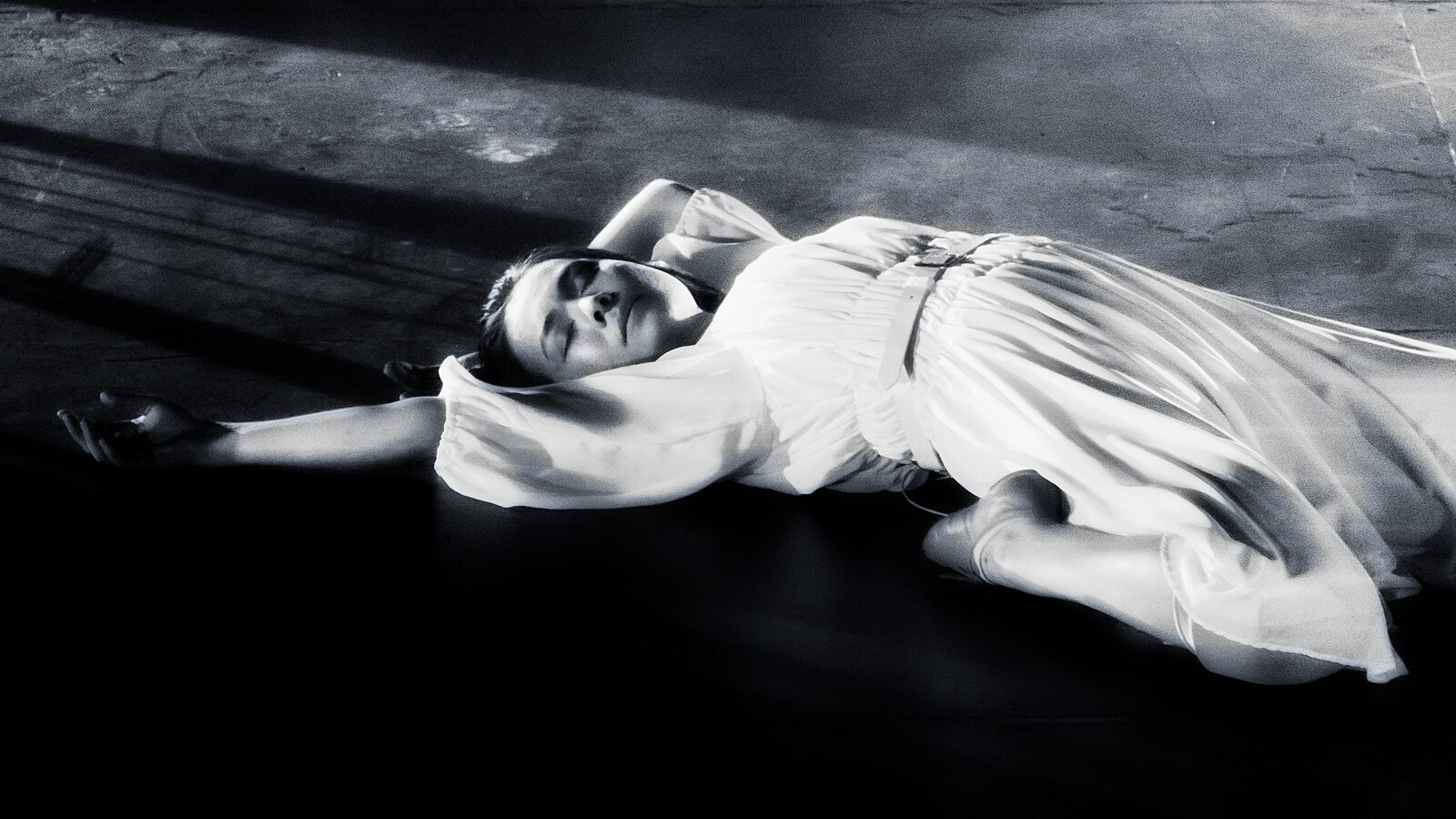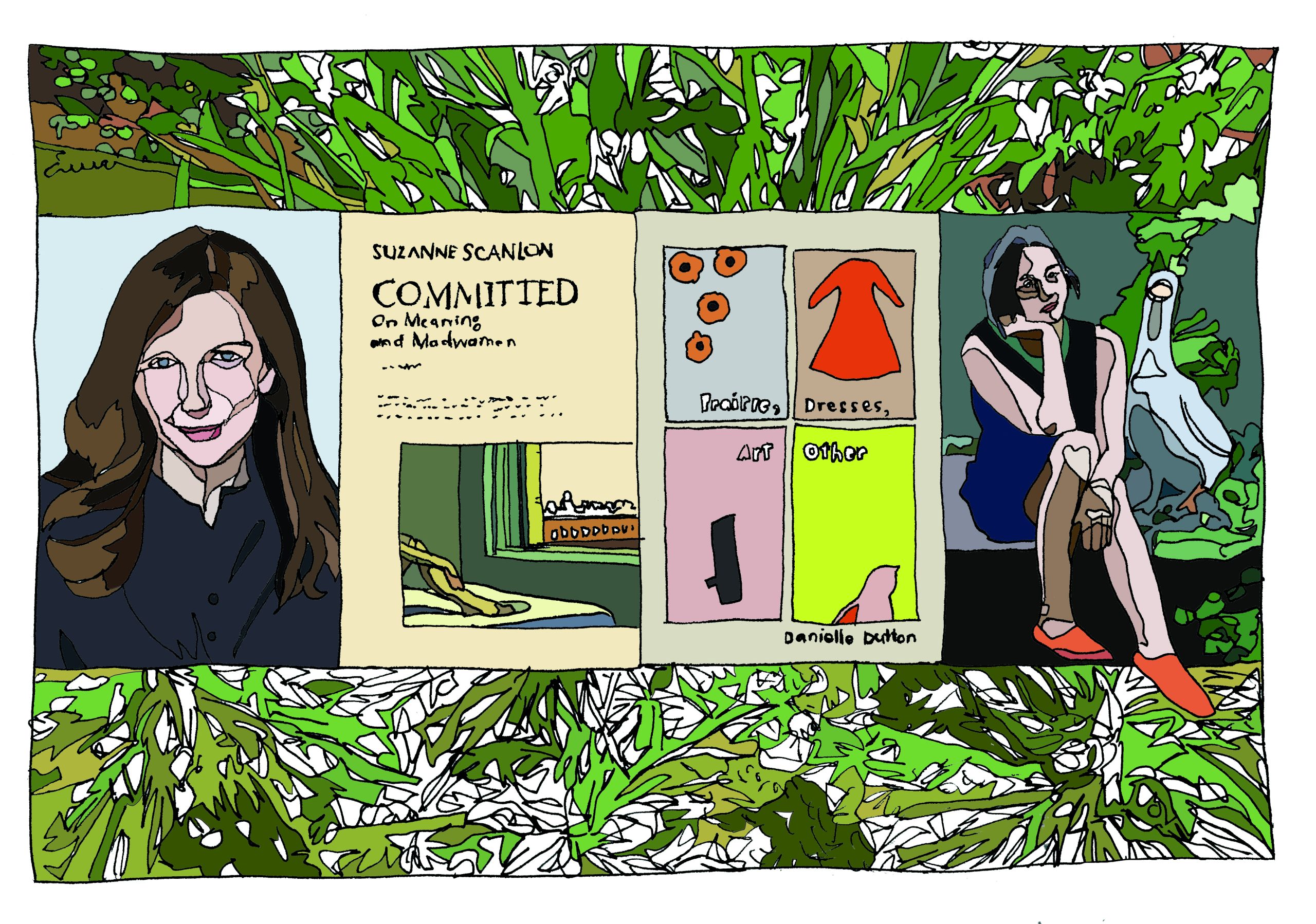Books & Culture
Dancing at the Altar of MUNA’s Queer Church
“Silk Chiffon” is an anthem to finding queer joy in the midst of collective suffering

Caught in traffic on I-95, my boyfriend asked me to put some music on. I had come back east for a friend’s wedding, and Harry and I were driving together to a small town in Connecticut for the ceremony.
“Time for ‘Silk Chiffon,’ ” I said, unlocking his phone.
Harry glanced over at me, then back at the road. “I have to tell you something,” he said.
The truth is, I already knew he didn’t like the song. I was baiting him. I blame Harry’s mother for teaching him that if he doesn’t have anything nice to say, he shouldn’t say anything at all. The trouble is, he also hates to pay out even a nickel of fake praise. So while my friends and I raved about MUNA’s latest single, widely considered one of the best songs of 2021, playing it on repeat and bleating the word silk like a queer species of goat, Harry held his stingy tongue.
“I just think it could go harder,” he said. “Like, bigger.”
I rolled my eyes and pressed play.
This past September, my friends Tyla and John—two ex-evangelical queers—came to visit me in Columbus, Ohio. They drove east all day to get there from Missouri, a long, flat drive of humorless billboards. Our plans were mostly loose, except that we had tickets to see MUNA and Phoebe Bridgers on Saturday. The concert was Tyla’s idea. She’s the last person anyone wants to disappoint, so we all signed up for a sad-song kind of night. Then, a week ahead of the show, MUNA released “Silk Chiffon,” a song that effervesces with queer joy. “Like, life’s so fun, life’s so fun,” insists lead singer Katie Gavin, “got my miniskirt and my rollerblades on.”
When I came out in 2012, a senior in college, I went about the business of remaking myself. I painted my nails and thrifted floral leggings. I read gay novels and tried to recreate their sex scenes with my first boyfriend. My politics radicalized, too, as I came to terms not only with having had my love life looted, but also with the inadequacy of marriage rights in a murderously unequal country. I started to write. I pinned my earworm to the page—an eight-year, three-letter hum—then dissected it.
I also wanted to hear my new desire reflected back at me. I hunted for explicitly queer music and learned that a good love song was hard to find. Sam Smith, who came out soon after I did, scrubbed the boy clean from their Whitney cover: “How will I know if you really love me?” Frank Ocean wrote “Forrest Gump” from Jenny’s perspective, but I wore it out anyway. I got really lucky just once, when I saw My Gay Banjo play a house show. Queers sat snug as Owen Taylor crooned, “You got a limp wrist / and a steady hand / Don’t gotta strong arm me / to be your man.” My boyfriend and I bought t-shirts.
I hunted for explicitly queer music and learned that a good love song was hard to find.
In the last decade, the genre has exploded. Janelle Monáe traveled from her cyborg future in vagina pants, Lil Nas X twerked on a muscle-daddy devil, and Troye Sivan bloomed. On the shoulders of queer ancestors, many of them necessarily oblique, these and other artists make unambiguously queer music. It still feels like a balm.
So too MUNA’s music, where women and enbies love each other—not exclusively, but specifically, and often politically. The final track on their 2019 album Saves the World opens, “You’re gonna move to New York / and experiment with communism / Go down on a girl / after reading her some Frantz Fanon.” The song goes on to address addiction and suicide, but the chorus swears, “It’s gonna be okay, baby / It’s gonna be okay.” It’s a falsetto I can believe in.
The tender lyrics of “Silk Chiffon” similarly situate both Gavin and Bridgers, who identifies as bisexual and features on the song’s second verse, in relation to other women: “Silk chiffon / That’s how it feels when she’s on me.” On the car ride to the zoo, windows down, most of us singing off-key, Tyla shouted, “Is this what love sounds like without patriarchy?”
The music video for “Silk Chiffon” complicates the pop song’s joy. It translates the 1999 teen movie But I’m a Cheerleader, which follows Natasha Lyonne to conversion therapy, for today’s internet generation. Like the cult classic, the band’s music video trucks in camp, the queer sensibility that toggles between irony and cheese. Katie Gavin arrives at conversion therapy dejected but in uniform, pompoms and all. The male counselor’s shirt reads STRAIGHT IS GREAT. The female counselor played by Bridgers, her hair dyed the same pink as all the girls’ clothes, coaxes Gavin inside. As the campers sit through a lecture, one slide instructs them to STOP DOING GAY, and the girl next to Gavin sneaks her hand on Gavin’s arm: “She said I got her if I want / She’s so soft like silk chiffon.”
Each time Gavin sings “life’s so fun,” we watch the campers suffer—first during the slideshow, later as the girls wash the floors and the boys chop wood. But as she builds to the chorus, the video cuts to joy: Gavin cheerleads on the lawn. A boy winks lasciviously at his counselor, whose whistle then dribbles out of his mouth.
It translates the 1999 teen movie But I’m a Cheerleader, which follows Natasha Lyonne to conversion therapy, for today’s internet generation.
At the end of the music video, the campers escape to freedom in the bed of a green pickup truck—an homage to The Miseducation of Cameron Post, a darker, more recent film about conversion therapy that ends the same way. While Cameron Post stops there, however, the camera zoomed in on its three runaways, their backs against the cab and their futures uncertain, MUNA delivers on the queer utopia of But I’m A Cheerleader. Inverting the video’s first scene, the campers all rush inside a gay bar, the bartender ironically wearing his own STRAIGHT IS GREAT t-shirt. They clink beer cans. Then MUNA takes the stage, and queer couples dance close in the crowd.
Raised evangelical, Tyla and John had it much harder than I did coming to queerness, let alone queer joy. When John was young, he fooled around in secret with the son of a family friend and flirted with a varsity running back. But then his father, a preacher, sent him to conversion therapy to save him from the sin. John studied his Bible. John married a woman. Only last year, finally, did he leave the church. He divorced his wife, came out as gay, and started to date. Though he felt held by the men he met, John quickly realized he wasn’t ready, two decades of dissonance still lodged like a splinter in his brain.
To cleave herself from the church, Tyla went to therapy. She read insatiably and transferred out of Bible college. By the time I met her, she already identified as queer. She glittered at Pride parades in Kansas City and skated on a roller derby team. Last summer, she and her husband sloughed off another layer of Christian shame and opened their marriage. Tyla called me to recount the bliss of her first time with a woman. And after she and her husband talked some more, all three of them climbed into bed together, nervous at first, but then sure of themselves and their bodies, her husband’s goldenrod in bloom out front.
Tyla and John arrived at my apartment Friday night sweaty and slaphappy. The next day, we explored Columbus. At Dough Mama, John studied the post-its on the mensch-y wall and redeemed a free coffee purchased by one “country queer” for another. At Rag-o-Rama, he picked out a sweatshirt for his ex-wife; Tyla got a denim vest. I strung up a hammock in the park and we assembled a playlist of perfect pop songs. We swapped coming-out stories over falafel before the show. On the ride over, we listened to “Silk Chiffon” once, twice, a third time, the whole car belting the bridge: “It feels good to me / who I want to be.”
And what I love about MUNA is that the joy in their music doesn’t turn its back on suffering. It just asks to cut in.
And yet—how ethical is joy, even queer joy, in the rattling deathtrap of late capitalism, hurtling toward eco-crisis? The lesbian poet Mary Oliver quickly dismisses my guilt: “If you suddenly and unexpectedly feel joy, don’t hesitate …There are plenty of lives and whole towns destroyed or about to be … Still, life has some possibility left. Perhaps this is its way of fighting back, that sometimes something happens better than all the riches or power in the world …” Sometimes, that something is a pop song, or a ten-hour road trip, or a blonde wig brought back to Missouri for doing drag with.
And what I love about MUNA is that the joy in their music doesn’t turn its back on suffering. It just asks to cut in. With “Silk Chiffon,” for example, the band mines even conversion therapy for its radical potential, converting Christian misery into queer joy. MUNA extends a hand to heretics of all kinds, inviting us into what the band calls “queer church, where God is a mystery and Jesus is a metaphor,” where we are all chosen family.
Growing up, I learned it was impolite to talk politics or religion with family and friends. But our lives are marred by politics, and MUNA’s religion is resistance. In perhaps their most popular song, “I Know A Place,” Katie Gavin preaches to her queer choir: “Somebody hurt me / but I’m staying alive.” If she can, then maybe we can, too. We take her hand when she asks if we want to go dancing because we have known pain and Gavin knows a place “where everyone’s gonna lay down their weapons.” She intones on the bridge, “They will try to make you unhappy / Don’t let them / They will try to tell you you’re not free / Don’t listen.” MUNA promises protection from a they that needs no elaboration. Tyla, John, and I can conjure our own faces and forces of oppression. We all can.
When the band performed the single on Jimmy Kimmel Live early in Trump’s presidency, Gavin debuted new lyrics: “Even if our skin or our gods look different / I believe all human life is significant / I throw my arms open wide in resistance / He’s not my leader even if he’s my president.” Far from spoiling our fun by singing about politics, MUNA reminds us that we can’t have joy without resistance, cunnilingus without communism—not in a conservative Christian country often hellbent on stealing joy out from under us. The band’s inclusive queer church, then, is a necessary refuge, one where we recommit to loving ourselves and each other, as we fight to make that love increasingly possible.
Is it too much for me to say that we were more than just parishioners that night?
At the concert, we came ready for worship. We wore our Saturday best—short shorts, mesh tops, brightly-colored hair, nose piercings—and we were on our best behavior. We doled out compliments in the bathroom. We pulled our masks on when we had to clump together and said excuse me if we had to squeeze by. As MUNA started to play, my friends and I found spots on the lawn near a genderfucked throuple and a crew of dyke Zoomers in plaid. The air was cool. Gavin shimmered on stage with her red hair and pale skin, her tank top satiny and green. She danced silly. We wiggled a little, too, Tyla passing a joint and mooning over the bassist, but mostly we waited.
Toward the end of their set, Gavin finally grabbed the mic and said, “This one’s for the gays.” The crowd erupted. And then again, when Bridgers joined the band on stage for her verse about catching a girl’s eye at CVS. We knew every word. As they dueted on the chorus, my friends and I jumped like mad, using each other’s shoulders to get more and more air. Is it too much for me to say that we were more than just parishioners that night? That we were saints, divinities even, no one on their knees, but flying, the whole pantheon of us better than all the riches and power in the world, screaming silk as loud as our queer lungs would let us?
You know what, who cares? It was joy, and it was ours.
The wedding reception took place at one of Connecticut’s state parks. Over the course of the night, Harry and I made friends with another queer couple. I knew one of them from school, and they introduced me to their partner as we caught up by the charcuterie board.
“Would you believe,” I said, my chest hair on display in my jumpsuit, “that my boyfriend shit-talked ‘Silk Chiffon’ on our drive up here today?”
“So your boyfriend has bad taste?” they said.
“Thank you!” I said, pointing him out on the patio. “No respect for our people.”
And that’s how two strangers came to be at Harry’s neck as the sun set over the Atlantic. They read him to filth. To his credit, he stood there and took it, handsome in his penny loafers and suspenders, cracking up, unable to get a word in edgewise. How nice to be together, all of a sudden among family.
Harry drank his wine. I kissed his cheek.








